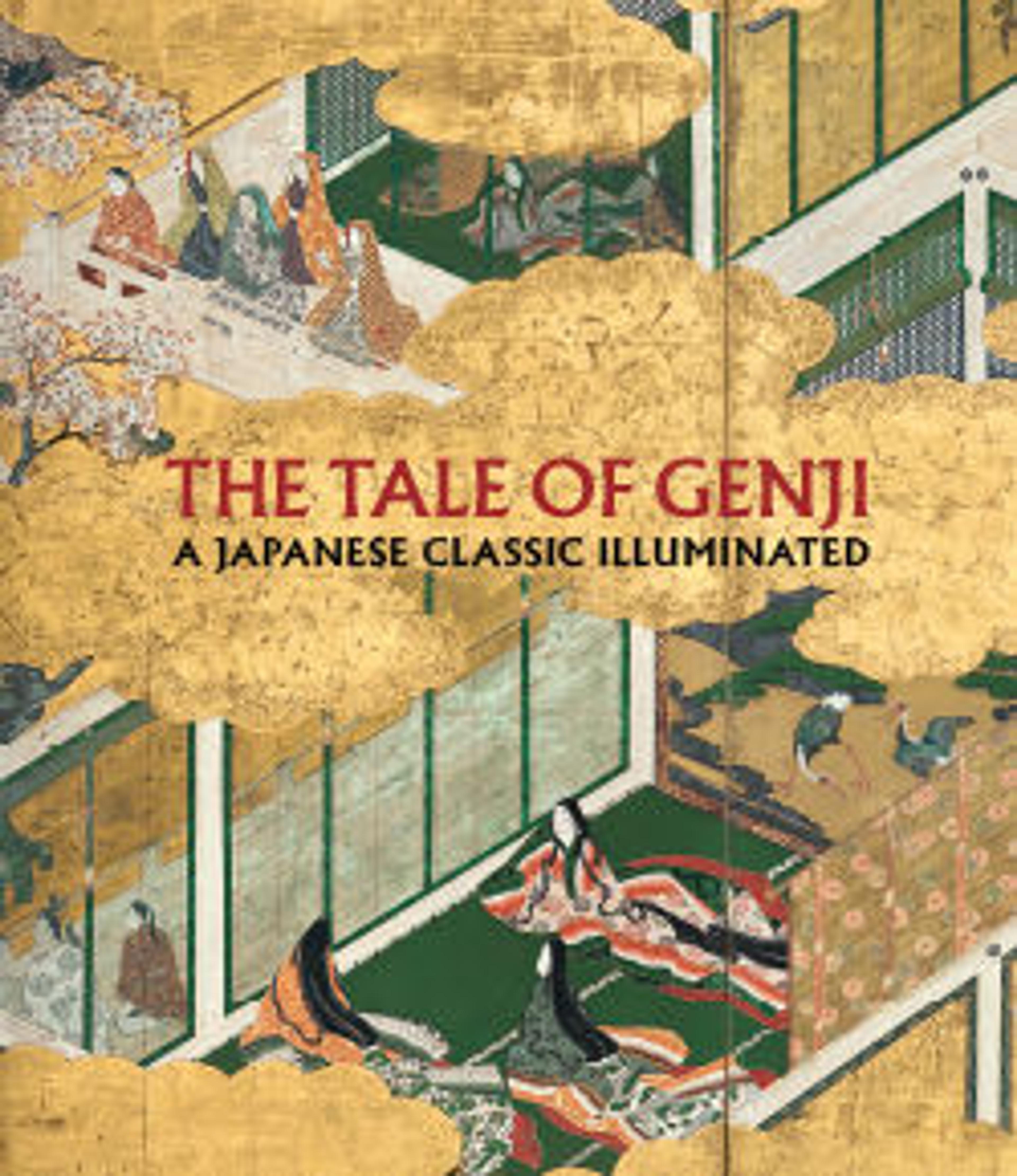Noh Costume (Karaori) with Cypress Fans and Moonflower (Yūgao) Blossoms
The pattern of a moonflower lying on an open cypress fan evokes Chapter 4 of The Tale of Genji, “The Lady of the Evening Faces” (Yūgao), and Genji’s tragic love affair with the woman known as Yūgao. She comes to Genji’s attention when he notices moonflowers, literally “evening faces” (yūgao), growing on the vine outside her humble abode—the same motif Ogata Kenzan depicted on his tea bowl displayed nearby. Seeing Genji’s carriage, the lady sends out a spray of the white flowers on
a fan inscribed with a poem. During a subsequent tryst, Genji takes her to an abandoned mansion, where she is killed by the jealous spirit of Genji’s neglected lover, Lady Rokujō. The episode inspired a Noh play titled Yūgao, attributed to Zeami (ca. 1364–ca. 1443).
Artwork Details
- 白地檜扇夕顔模様唐織
- Title: Noh Costume (Karaori) with Cypress Fans and Moonflower (Yūgao) Blossoms
- Period: Edo period (1615–1868)
- Date: 18th–early 19th century
- Culture: Japan
- Medium: Twill-weave silk with brocading in silk and supplementary-weft patterning in silk and metallic thread
- Dimensions: Overall: 67 x 56 in. (170.2 x 142.2 cm)
- Classification: Costumes
- Credit Line: Gift of Dorothy F. Rolph, in memory of her sister, Helen L. Beloussoff, 1961
- Object Number: 61.151.6
- Curatorial Department: Asian Art
More Artwork
Research Resources
The Met provides unparalleled resources for research and welcomes an international community of students and scholars. The Met's Open Access API is where creators and researchers can connect to the The Met collection. Open Access data and public domain images are available for unrestricted commercial and noncommercial use without permission or fee.
To request images under copyright and other restrictions, please use this Image Request form.
Feedback
We continue to research and examine historical and cultural context for objects in The Met collection. If you have comments or questions about this object record, please contact us using the form below. The Museum looks forward to receiving your comments.
